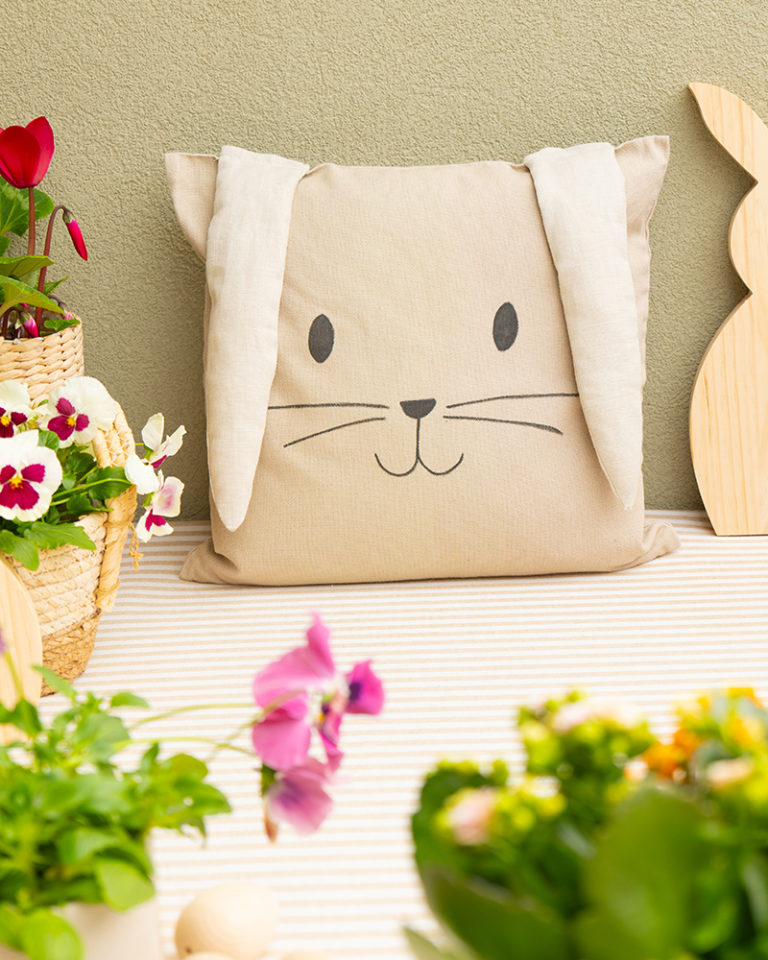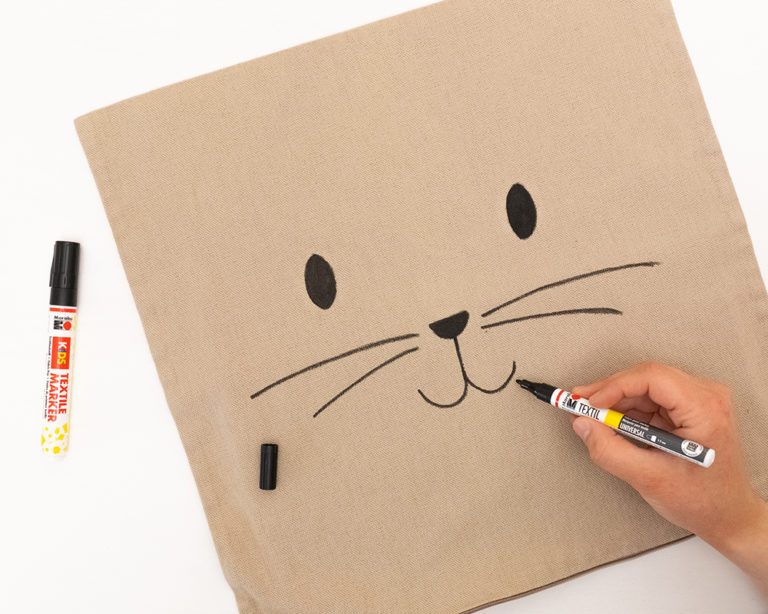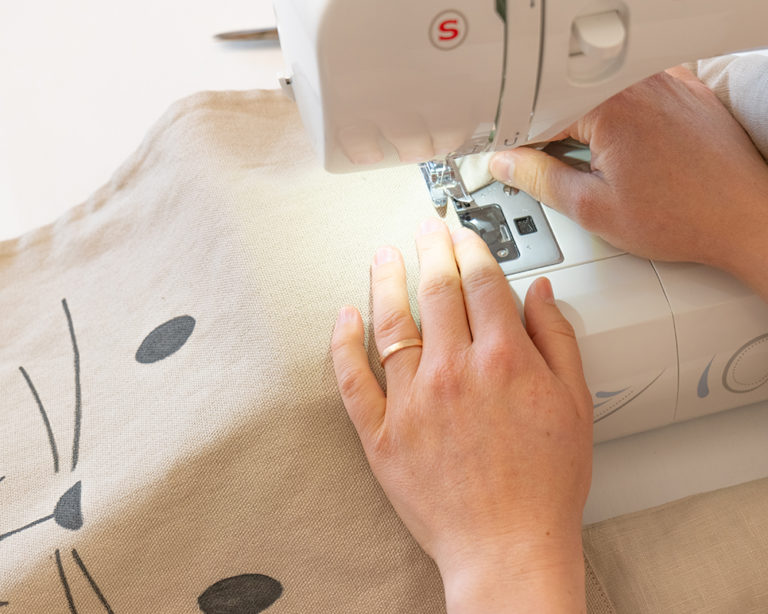Bunny pillow with Marabu Textile Painter and KiDS Textile Marker
If your new favorite pillow is smiling and has bunny ears, it has to be homemade! With the Marabu Textile Painters it’s really easy. The little bunny’s face is painted on in no time and the ears are sewn on with matching fabric. It’s also a perfect creative project to do with the kids: even the little ones can draw on the bunny’s face with the KiDS textile markers.









